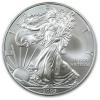

| Visitors Now: | |
| Total Visits: | |
| Total Stories: |

| Story Views | |
| Now: | |
| Last Hour: | |
| Last 24 Hours: | |
| Total: | |
ZeroHedge: 3rd Worst Soybean Yield Signals Price Susceptible To Further Spikes
Be prepared for the next great transfer of wealth. Buy physical silver and storable food.
Recent consolidation in Soybean prices may be susceptible to notably higher prices since JPMorgan’s new Soybean Crop Condition Index suggests the crop is in much worse condition than average conditions since 1986. They see the 2012 crop faring slightly better than the 1988 crop (thanks to seed technology) but suggest this could be the third-worst crop since 1964 in terms of actual yields relative to trend. Critically, if long-term drier- and hotter-than-average weather occurs (which appears likely from forecasts with soil moisture levels so low as to make even marginal rain practically useless), there is considerable downside risk to the soybean yield forecast (and implicitly upside risk to prices).
Soybean price consolidation…
JPMorgan Soybean Conditions
We introduce our US soybean crop condition index (CCI): We calculate this indicator using the same methodology as our corn CCI using weekly data from the USDA’s crop condition ratings (summing 2*proportion of crop rated excellent, 1*proportion of crop rated good, ?1*proportion of crop rated poor and ?2*proportion of crop rated very poor).
This week’s soybean CCI indicator suggests that the crop is currently in much worse condition than average conditions since 1986. However, we think the 2012 US soybean crop will fare slightly better than the 1988 crop as seed technology has made the crop more resistant to drought and there is potential for improved weather through the end of August. Our yield forecasts suggest that this could be the third-worst crop since 1964 in terms of actual yields relative to trend (Exhibit 2). Keep in mind that soybeans are more resistant to harsh weather than corn—even in 1988, US average corn yields declined by 24% relative to trend, while soybean yields only declined by 17% relative to trend.
Light rain in the forecast for the US Midwest is unlikely enough to reduce soil moisture stress: During this week, some precipitation affected the northern and eastern part of the Corn Belt but temperatures remained about 1°-to-5°C (2-to-9°F) above average. Current weather forecasts suggest that light rain will continue through the next 1-to-2 weeks; however hotter conditions will also persist. Longer-term forecasts suggest that weather for the balance of August will generally feature above-average temperatures and average to below-normal precip in a large portion of the Midwest. In a normal year this forecast would not be particularly detrimental for US soybeans, but because the soil moisture is so low, rounds of light rain will not be helpful for yields. We took short term weather forecasts into account in our latest 2012 US soybean yield estimates. If long term drier- and hotter-than-average weather occurs, there is downside risk to our 2012 US average soybean yield forecast.
via zerohedge
2012-08-07 15:37:45
Source:





